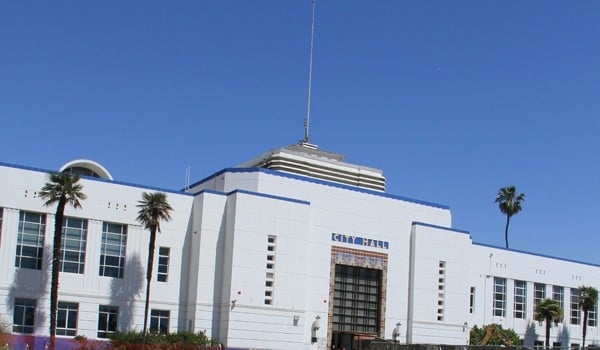The City Council reconvenes May 24 with a packed agenda featuring budgets, development, water and a diverse consent calendar.
Council meets at 5:30 p.m., May 24 at City Hall, 1685 Main St. For a complete list of agenda items, visit www.smgov.net/departments/clerk/agendas.aspx.
Budget
City Hall has a two-year budget cycle and a five-year General Fund budget projection. During the “exception years” to the established budget cycle, City Hall has had a policy of investing in its Capital Improvement Program to support important infrastructure. The 2016-17 fiscal year is an exception year and council will discuss their infrastructure priorities, as well as plan for next year's budget.
They will also receive an update on the five-year plan.
“The Update shows positive balances during the first three years of the five-year forecast and shortfalls of $3.5 and $6.4 million (1.6% of the General Fund Budget), respectively, in the last two years. These shortfalls reflect large-scale capital infrastructure improvements and also anticipate that costs associated with providing current service levels are expected to increase at a faster pace than revenues,” said the staff report.
According to the report, the financial status of non-General Funds remains stable and the proposed Citywide FY 2016-17 exception year operating budget is $508.1 million.
Zoning rules
Development in the Downtown area has been guided by an interim ordinance while the city worked toward what is now known as the Downtown Community Plan. With the timeline for the DCP extended, the interim ordinance needs to be extended through Aug. 31, 2017.
“Extending the interim ordinance ensures there continues to be a development agreement process, in the interim, for Downtown projects over 32 feet high so that the City has flexibility to incorporate into the development review process goals for the Downtown, including urban design, open space, community benefits, and expanding transportation choice,” said the staff report.
The extension includes two amendments. The first is a temporary ban on converting full service restaurants into so-called “fast-casual” eateries. The second amendment would lift the cap on alcohol establishments in the downtown area.
“Alcohol sales in restaurants are an incidental component of the primary use of the business as a restaurant. Further, alcohol-related impacts are generally not associated with restaurants that provide alcohol service,” said the staff report.
Business permits
Council will consider revisions to permitting rules for some business types. As written, some rules can create conflicting limitations for some business types. The Chamber of Commerce has asked council to revise rules for Conditional Use Permits to clarify the rules and their applicability.
Expanding City Hall
City Hall is expanding City Hall with a new City Services Building. Council will be asked to sign off on the design development process for the new building. The building is striving for a Living Building Challenge certification, achieving net-zero energy and net-zero water use.
“The City Services Building would eliminate the majority of expensive offsite leased space unifying administrative staff and customer service in one location, which results in ongoing operational savings,” said the report.
According to the report, costs continue to increase for the building.
“The estimated cost increased by $17,691,000 for an updated project total not to exceed of $74,566,130,” said the report. “In addition, associated tenant improvement modifications must be done to the original City Hall on several floors totaling $8 million in order to accommodate the staff and operations moving into those spaces. A total of $8,094,501 has already been appropriated and committed for the feasibility and design phases, leaving $74,471,629 to be funded by lease revenue bonds for the City Services Building and associated City Hall Tenant improvements.”
Water plan
Like all water providers of a certain size, Santa Monica is required to prepare and adopt an Urban Water Management Plan (UWMP). The plan must outline the City's efforts to comply with a State mandate to reduce water consumption by 20 percent by the year 2020.
Santa Monica's plan adopts the most stringent options for compliance.
“Beyond merely meeting the State requirements for preparing an UWMP, the City of Santa Monica continues its proactive approach in managing its water resources through significant policy and practice developments since 2010. These include the City's Water Shortage Response Plan, Sustainable Water Master Plan, and Groundwater Basin Assessment. All of these reports support and align with the 2015 UWMP,” said the staff report.
Plans are reviewed by the state Department of Water Resources.









